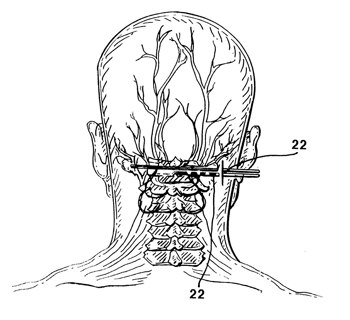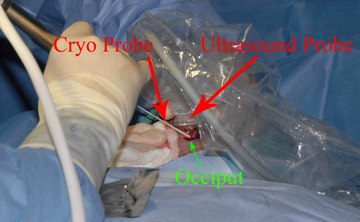Occipital Neuralgia – Symptoms, Treatment, Causes and Surgery
What is Occipital Neuralgia?
It is otherwise known as Arnold’s neuralgia or C2 Neuralgia. It is a medical term given that connotes a cycle of having pain then spasm then pain again which originates from the base of the skull or medically termed as suboccipital area which radiate to the person’s back then to the front and towards the head’s side and also behind the person’s eyes.
It is a condition that affects the neurological aspect in which the ones affected are the occipital nerves which are injured or inflamed. It is similar to migraine or headache because they produce similar symptoms which can confuse you. The main difference is that this condition is a distinct kind of disorder that needs a proper treatment.
Other experts would define it as a peripheral nerve stimulator or a headache form involving the occipital nerves which emerges between the spinal bones located in the upper neck region towards the scalp area. It is often characterized as having a pain paroxysm that occurs with the distribution of the person’s occipital nerve.

Occipital Neuralgia image
Occipital Neuralgia Symptoms
One particular symptom associated with this condition is having a chronic form of headache. Another notable symptom is the presence of intense like pain which is often described as jabbing, electric shock, sharp pain in the person’s back of the neck and head. Other symptoms that the patient may experience include:
- Light sensitivity
- Scalp tenderness
- Pain behind the person’s eye
- Pain when moving the person’s neck
- Chronic form of Headache

Chronic form of headache (symptom of occipital neuralgia)
- Pain upon moving the neck
- Pain on both or one side of the person’s head
These are just the common symptoms associated with this disease condition.
Occipital Neuralgia Causes
The occipital neuralgia may either be classified as primary or secondary. When a person has a primary kind of occipital neuralgia, they don’t have a known cause. Since there is a no known cause or it is idiopathic in nature, it is often confused with cluster headaches or migraine. On the other hand, when a person has secondary kind of occipital neuralgia, they have the disease because it is associated with a disease condition such as:
- Tumor
- Infections
- Hemorrhage
- Trauma
- Repetitious contraction of the neck
- Nerve stress
- Nerve lesion
- Arthritis
- Always keeping the head forward or downward position in a lengthy period
- Gout
- Diabetes
- Inflammation of the blood vessel
- Contraction of the muscle neck which is repeated
- Compression of the spinal column
These are the common causes of why persons acquire the disease condition called occipital neuralgia.
Occipital Neuralgia Treatment
The treatment for persons who have occipital neuralgia will depend on the cause of why the person has the condition. The primary goal is the reduction of inflammation and the relief of pain. You can relieve your pain through:
Non Surgical Management
- Resting in a quiet room – Having a massage especially in the painful and tight muscles of the neck
- Over the counter anti inflammatory medications such as ibuprofen
- Applying heat to the person’s neck
- Acupuncture – The care modalities mentioned above are the one that is tried out first before going through the physician drug prescription.
Medical Treatment
If the independent care modalities do not work, your physician may suggest or prescribe the following treatment drugs such as:
- Antidepressant drugs which is considered as the main and primary treatment in preventing may types of headaches which includes occipital neuralgia.
- Steroid drugs which is for short term use only which is used for inflammatory reduction
- Anti neuropathic drugs to prevent and treat neuropathic problems
- Anticonvulsant medications such as Neurontin and Tegretol to prevent convulsion
- Muscle relaxants that are under the prescription drugs given to relax the tense muscles
- Anti inflammatory medications such as non-steroidal anti inflammatory drugs given to reduce the inflammatory process
- Analgesic medication given to treat pain
- Occipital or Local nerve block which involves in the injection of a medication which numbs the pain
Surgical Management
- Peripheral nerve stimulation to stimulate the nerves
- Occipital Neuralgia Surgery – When, for instance, the care modalities or treatment provided, as stated above, does not work as it should and as it is expected to be. Then the last option is surgical procedure which may include either of the following:
Occipital Nerve Stimulation – What happens here is that, there is a usage of neurostimulator which delivers the electrical impulses towards the person’s inflamed or destroyed occipital nerves. Here, the insulated wires are being attached to the neurostimulator which are being inserted under the person’s skin. Through the electrical impulse, it can aid in the blocking of the pain message which is brought through the person’s brain. This kind of surgical procedure is a less invasive kind which will not damage the areas surrounding the nerves and the nerves itself.

Occipital Nerve Stimulation
Decompression of the Microvascular Nerve – What happens here is that the doctor or the surgeon in charge relieves the pain through adjusting the person’s blood vessels which compresses the person’s nerve. Here there is an exposure of the occipital nerves and the surrounding vessels. What is done is that the vessels are being moved away from the person’s nerves which will lead to less pressure on the nerves leading to a better functioning of the nerves. This kind of surgical procedure acts like a pacemaker of the heart, which functions as a deliverer of small charges of electricity to the patient’s nerve in order to prevent the occurrence of any type of headache. In other case, the surgical procedure of burning the nerve is done instead of cutting it. The main goal of surgical procedure is to cut the nerve in the occipital region which will prevent it to send messages especially pain messages to the person’s brain. Before undergoing any of the procedures mentioned, the patient and the physician should be able to weigh the pros and cons or the benefits and risk before deciding to pursue the surgical procedure.

Surgical procedure to treat Occipital Neuralgia